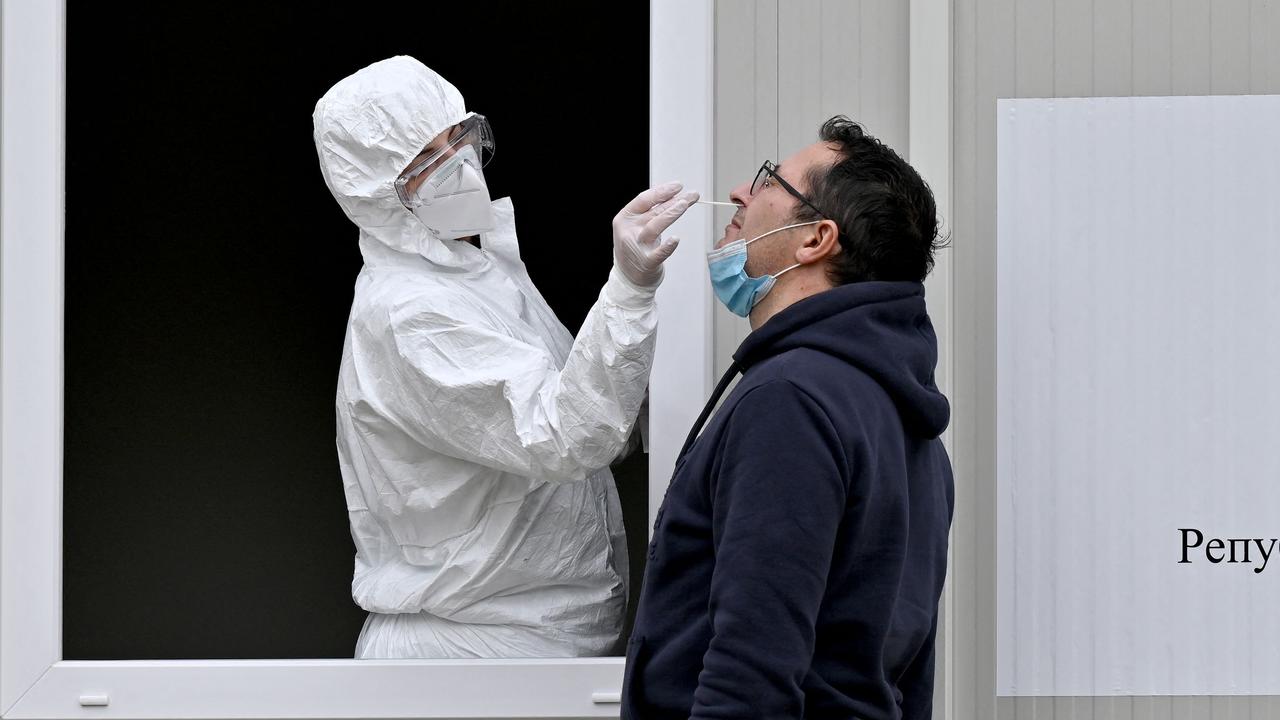‘We have to realise how lucky we are to have any Covid vaccines’, say Australian AstraZeneca heroes
Professors Matthew Snape from Melbourne and Merryn Voysey from Queensland are not household names, but they should be. They helped save the world from Covid.
Coronavirus
Don't miss out on the headlines from Coronavirus. Followed categories will be added to My News.
Exclusive: Professor Matthew Snape and Prof Merryn Voysey are not household names, but they should be. These two Australians helped save the world.
While most people spent lockdowns bingeing on Netflix, Melbourne’s Prof Snape and Prof Voysey were on the pandemic frontline, running clinical trials for the AstraZeneca vaccine created in Oxford, England.
The days were extraordinarily long and there was significant pressure to balance the need for speed with scientific rigour.
Prof Snape, who grew up in Melbourne and worked at the Royal Children’s Hospital before moving to London to work at St Mary’s Hospital as a paediatrician, helped shape the trials.
Both Prof Snape, 52, and Prof Voysey, 48, studied at St Cross College at Oxford University which, like its rival Cambridge, is made up of a series of small colleges that are fiercely independent, where students live and study together in the college grounds – a little like Hogwarts in the Harry Potter books.
Prof Voysey, who grew up in Brisbane and went to Kenmore State High School and QUT, is the lead statistician at the Oxford Vaccine Group and helped design the trial from the ground up.
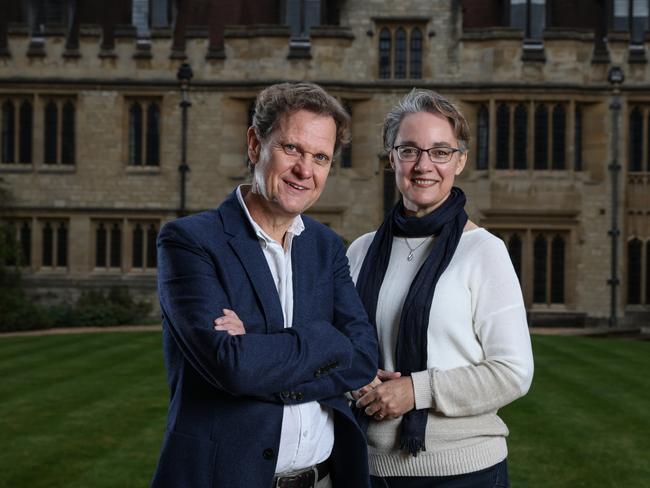
Prof Voysey worked out how many people needed to be involved and making sure the maths added up.
Her name was listed first on the paper that proved AstraZeneca worked, which was published on December 8, 2020.
While Prof Voysey has largely flown under the radar outside scientific circles, Prof Snape’s fame went global in April when it was noted he shared the same name as the Harry Potter character Prof Severus Snape.
“When I was ranked between Mick Jagger and Idris Elba on Twitter, I took a screenshot,” he said, with a self-deprecating laugh.
The Oxford University Twitter account also noted the attention, posting a clip of the actor, the late Alan Rickman in character and pointing out that the real Prof Snape was much friendlier.
All jokes aside, that rock star and movie star attention and adulation is what Prof Snape, Prof Voysey and all those who worked on the Oxford vaccine should be receiving.
“I think we have to realise how lucky we are to have any vaccines and to take the vaccines that are available, that’s a very clear message,” Prof Snape said.
“We have to remember it’s remarkable — there are many vaccines that didn’t get to this stage and have fallen by the wayside and didn’t actually get through to being approved and licensed to give to people. That is an amazing achievement.”
There was a wave of hope in December last year when Pfizer and then the Oxford AstraZeneca vaccines were approved within days of each other.
Given early hopes were for vaccines that were 50 per cent effective, the 90 per cent plus efficacy now seen was beyond the science community’s wildest expectations.
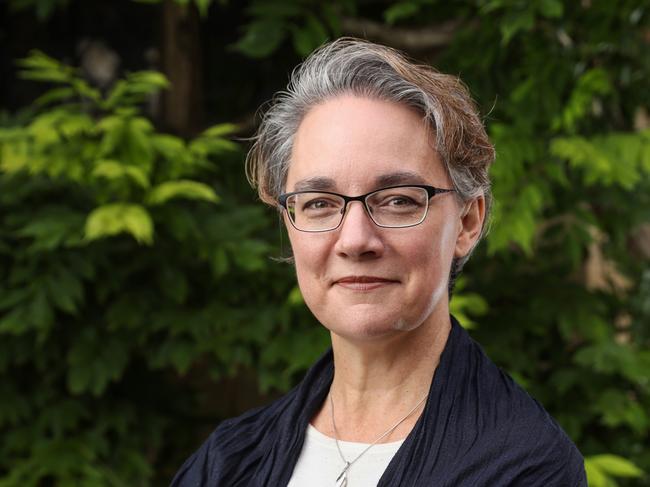
In Australia, there has been a preference for Pfizer vaccines following reports of blood clots linked to the AstraZeneca jab that led to nine deaths from 12.8 million doses administered across the country.
The AstraZeneca jab was the first, and most scrutinised jab. Heart problems produced by the Pfizer vaccine have not had the same level of attention.
Prof Snape is diplomatic when asked about the perception of the AstraZeneca jab.
“With the Oxford AstraZeneca vaccine there’s been some issues in terms of — and I’m trying to choose my words carefully — public relations and public perceptions,” he said.
“If a vaccine had been developed in Australia, I think that the attitudes to it would have been quite different.”
Melbourne has endured the world’s longest lockdown, Sydney spent 107 days in lockdown, while Queensland will not open its borders until a week before Christmas, and only if it reaches 80 per cent double dose vaccination.
People will be travelling to Bali before they get to Broome, with no signs soon that Western Australia will walk away from its hermit kingdom status.
Australia’s early success at keeping the virus out with border closures has been both a blessing and a curse.
How do you encourage people to take a jab when their chances of getting infected are low?
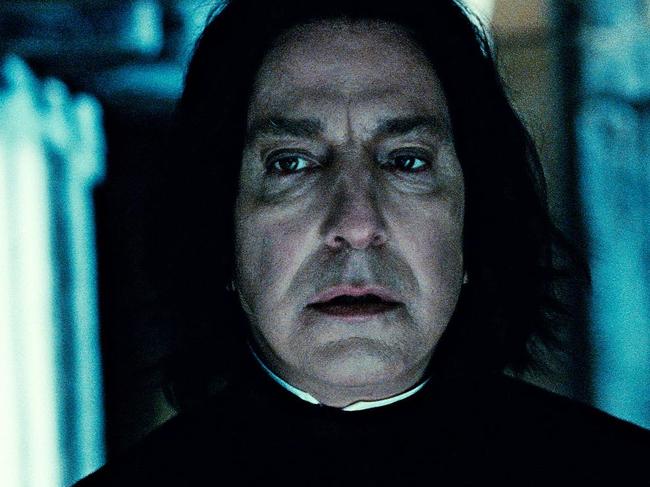
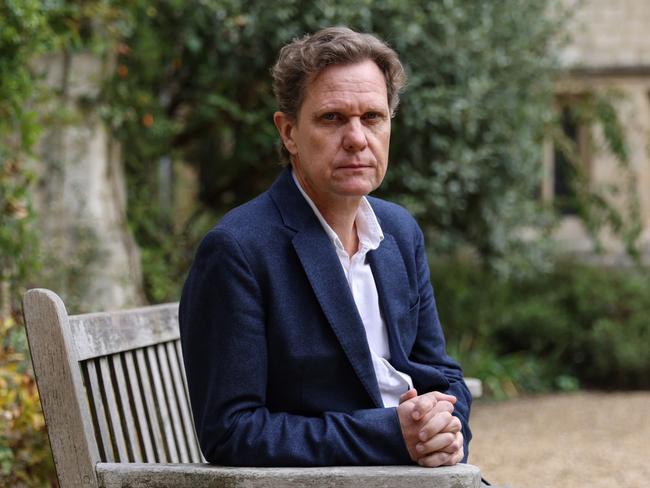
The Delta strain changed that forever, with Professor Sir Andrew Pollard, the head of the Oxford Vaccine Group, and also Prof Voysey’s PhD supervisor, saying that herd immunity was “mythical” with everyone in the world likely to get the virus.
“Anyone who’s still unvaccinated at some point will meet the virus,” he told British MPs in August.
Prof Voysey is the person any doubters should be listening to with regards to the safety of the vaccine, not their mate who heard from a friend, who had read a Facebook post from an “expert” who made a comment on Instagram after they had seen it on Twitter.
“With these trials there was such an intense global focus on safety, efficacy was important but that was a bit down the track,” Prof Voysey said.
“Safety was important from day one.”
Prof Voysey began work on the trial shortly after the pandemic hit in 2020.
Volunteers came for testing and jabs in the car park outside her office at the Centre for Clinical Vaccinology and Tropical Medicine, based behind the Churchill Hospital in Oxford.
The researchers were worried that there would be a Covid-19 outbreak among the team, but surprisingly, they escaped.
Prof Voysey did not contract Covid-19 during the pandemic, and only suffered a cold when she took holidays in June this year.
It’s remarkable the researchers were able to avoid an outbreak, delivering a high-quality vaccine trial involving more than 34,000 people in the UK and Brazil.
Prof Voysey’s proudest moment during the pandemic was when she received a photograph from Australia.
“My parents sent me the photo of them with their certificate that they had got their first dose of AstraZeneca in Brisbane,” she said.
“That was amazing to have worked on that vaccine and then have my parents in Australia, on the other side of the world getting access to it so rapidly.
“I felt relieved that I didn’t have to worry about them quite as much because they had some protection.”
The work has not stopped for either researcher.
Prof Snape had to give up his clinical days at St Mary’s Hospital in London to focus on his research.
He is now looking at new mix and match studies in teenagers to find out if a combination of AstraZeneca and Pfizer produced better results than two shots of the same vaccine.
He had already done that work early on in the pandemic among an adult cohort, with results indicating AstraZeneca could be boosted with a second Pfizer jab.

Prof Snape was also running a study into how Covid-19 vaccines work on pregnant women. There are delays in getting the studies to print in the scientific journals because of the sheer volume of results, but the data has already been presented to decision makers in Britain as they consider their ongoing vaccine program.
Prof Snape said he was commissioned to do the mix and match studies at the start of the pandemic.
“The question came, and it was very insightful of the vaccine task force to say, ‘well what if we start an immunisation campaign and there was a problem with manufacturing and you’ve got millions of people immunised with one vaccine, can we then switch to another?’,” he said.
“Now, as you know in Australia and some other countries there are restrictions on the use of AstraZeneca.
“In a parallel universe, let’s say you had that signal with the Pfizer vaccine, so you needed to know what was going to be happening.
“So we predicted there could be an issue or some change in the guidelines as the vaccine was being rolled out and the good news was that we did have the data to be able to inform those decisions, to be able to say this is what it will look like.”
More than 1.1 billion doses of AstraZeneca have now been distributed across 170 countries. The Oxford vaccine group did not just make a jab that worked, they made it accessible, with AstraZeneca producing it at cost during the pandemic.
The jab costs $4 per dose — less than a cup of coffee at most local cafes.
And it can be stored in the fridge, unlike the Pfizer vaccine, which must initially be stored at -70 degrees, making it harder to distribute in poorer countries.
Prof Snape and Prof Voysey deserve the same standing ovation given to Professor Dame Sarah Gilbert, the co-creator of the AstraZeneca vaccine, when she attended Wimbledon in the Royal Box.
Certainly those doing the Australia Day honours should have Prof Snape and Prof Voysey at the top of their list.
Australia’s AstraZeneca shots were made in CSL’s factory in Broadmeadows, in Melbourne’s northern suburbs.
Almost one million doses a week of the lifesaving drug have been made there, with 20 million rolling out of the factory so far.

The Federal Government has a contract for 50 million doses, most of which will be shared with other countries in the Pacific region as part of the global COVAX deal.
Australia’s vaccination rates are now world beating, thanks mainly to an expanded supply of Pfizer.
But those AstraZeneca shots were key in protecting the most vulnerable — those over 60, and Health Minister Greg Hunt said AstraZeneca was key to Australia’s vaccine rollout.
“There was a concerted anti-AstraZeneca campaign going on in some parts of the media and among some in academia,” he said.
“Their opposition to AstraZeneca was a dreadful and reprehensible error that put the Australian vaccination program at risk. AstraZeneca has been absolutely essential to the vaccine rollout.”
While the West Australian newspaper published a photograph of a blood clot on its front page, screaming about the danger, the actual risk is about one in two million chances of a fatal blood clot after taking the jab.
Queensland’s Chief Health Officer Jeannette Young gave anti-vaxxers a clip for their videos when she said in June that she did not want under 40s getting the AstraZeneca jab – even though it had been approved.
Unsurprisingly, Queensland’s vaccination rates are lagging behind the rest of the nation, with the exception of Western Australia.
Mr Hunt spoke to Dame Gilbert personally when deciding on whether to order AstraZeneca and to make it in Australia because of concerns about worldwide supply.
“The fact that you’re recognising Matthew Snape and Merryn Voysey is long overdue, in my view they should be in line for the highest honours in Australia,” he said.
“They have saved lives not just in Australia but around the world. Fiji is a great example, Australian-made AZ doses and US doses have been sent there and that has helped Fiji avoid a catastrophe.”
Mr Hunt said Japan put in an order for Pfizer doses earlier than Australia, but “they got exactly the same per capita doses as Australia did in mid February.”
“It was absolutely clear to us that we could not rely on doses. US President Trump was not exporting vaccines at that point, and Europe had to prioritise its nations and prevent mass human death,” he said.
Bill Shorten, Shadow Minister for NDIS and Government Services, says the AstraZeneca vaccine “helped save Australia”.
“I have the highest praise for the Australian-made AstraZeneca vaccine,” he said.
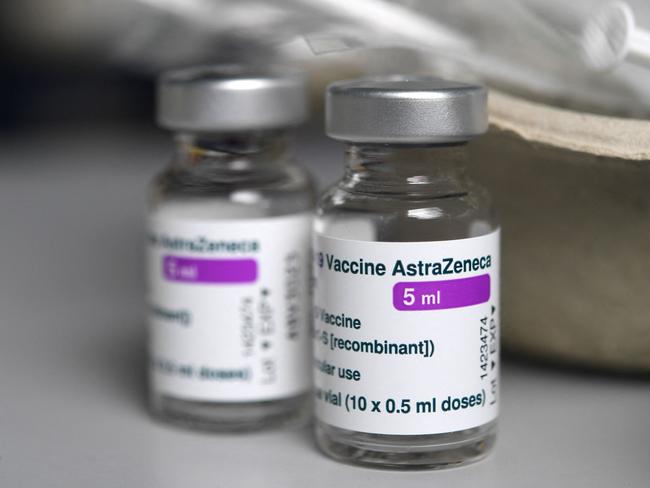
Covid-19 is already moving from being a pandemic virus to endemic – a scientific term meaning that it will always be with us, bouncing around the world a little bit like the flu.
Australia’s early success at border closures, which come at a significant cost to families being separated and jobs being lost, was unsustainable.
The Delta strain even forced Victorian Premier Daniel Andrews to drop his obsession with “doughnut days”.
That’s where AstraZeneca, the cheap and easily distributed vaccine, will be so crucial in keeping the world open and preventing the outbreak of new deadlier strains.
New treatments on the blood clot side effects from AstraZeneca have also reduced the risk of vaccine induced fatalities.
So unless the whole world is vaccinated, all it takes is for a new strain to develop in Indonesia and then someone to bring it back in their backpack from Bali for Australia to be plunged into chaos again.
Prof Voysey said now was the time to step up the medical research effort to be ready for the next pandemic.
“If we weren’t as prepared as we were, then none of this would have been possible,” she said.
“We don’t want to fall into the trap of being unprepared again in the future. Let’s keep going.”
More Coverage
Read related topics:AstraZeneca




